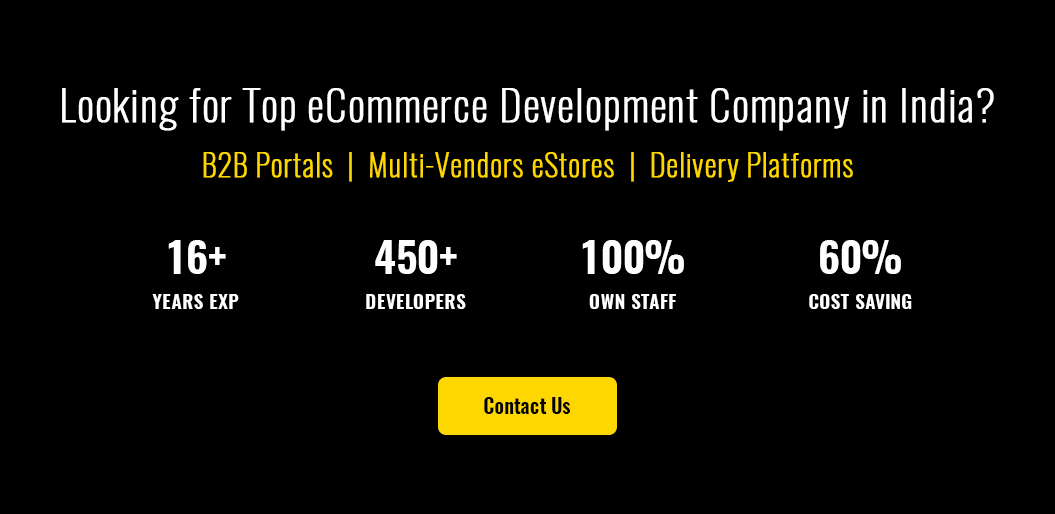Headless Commerce is evolving. In the past, businesses would focus on driving traffic to their website and converting that traffic into sales.
However, in today’s digital age, more and more businesses are moving towards a headless commerce model. This is where the customer experience is no longer constrained by the limitations of a traditional eCommerce website.
In this comprehensive guide, we will explore the State of Headless Commerce in 2022.
We will look at the benefits of headless commerce, as well as some of the challenges.
What is Headless Commerce?
It is an architecture where the frontend and backend decouple.
The backend (i.e., commerce platform or CMS) hosts the eCommerce data, while the frontend is typically a mobile app, Progressive Web App (PWA), or IoT device which uses APIs to pull that data when needed.

Image Source: Techemizen
Headless commerce differs from traditional e-commerce, where the frontend and backend tightly ally. And so, the eCommerce data is hosted by a single platform (Magento).
Moreover, as the frontend and backend are in the decoupled form in headless commerce, dedicated eCommerce developers can pull data from multiple systems (e.g., ERP system) through APIs to create a more seamless experience for customers.
How Does Headless Commerce Work?
When a customer interacts with a headless commerce frontend (e.g., mobile app, PWA, or IoT device), they are actually communicating with an API gateway. This is the layer that sits in between the customer and the backend system(s).
The API gateway then communicates with the various backend systems to get the data for the frontend to function.
For example, a customer searches for shoes on an eCommerce mobile app.
This search request is sent to the API gateway, which then communicates with various backend systems (e.g., commerce platform and product information management system) to retrieve this data before sending it back to the mobile app in real-time.
Why Use Headless Commerce?
There are many benefits of using a headless commerce model. Some of the key benefits include:
Flexibility and Scalability
As headless commerce frontend and backend are in a decoupled condition, businesses can easily scale their eCommerce operation by scaling the number of API gateways.
This also provides more flexibility as businesses can easily change the front end without having to worry about the backend.
Improved Customer Experience
Headless commerce is more flexible and offers a higher level of personalization, leading to an improved customer experience.
For example, if a business has multiple channels (e.g., mobile app, PWA, and IoT device), customers will have a seamless experience across all channels.
Leveraging Emerging Technologies
With the growth of IoT and voice search, businesses can leverage APIs to pull data from backend systems into these new frontends.
Without headless commerce, businesses would need to build dedicated mobile apps for each device (e.g., Apple Watch). This is not only expensive but also time-consuming.
Cost Savings
Headless commerce can lead to cost savings for businesses as they can reuse the same backend systems for multiple frontends (e.g., mobile app, PWA, and IoT device). In addition, there are no licensing costs for using an API gateway.
Also Read: Know The Key Differences Between B2B and B2C eCommerce Websites
Remain Competitive
Headless commerce can help businesses stay competitive as they can quickly launch new features and channels to market. Moreover, as headless commerce is more flexible, businesses can quickly adapt to changes in customer behavior.
Agile Marketing
With a traditional eCommerce platform, changing marketing campaigns (e.g., free shipping) can take weeks or even months to implement as it requires the dedicated support of IT developers and designers.
In contrast, headless commerce enables marketers to quickly test new campaigns and make changes in real-time without waiting too long due to slow development cycles.
Simple Customization
A headless commerce platform is more customizable than a traditional platform. This is because the frontend & backend are decoupled, so you can use any technology or tool to build your customer-facing interface.
In contrast, with a traditional eCommerce system, you will not get sufficient backend support or access.
Faster loading time
In headless commerce, the frontend will not get any error on changes to the backend. This means that you can minimize downtime as there are no delays when updating content or implementing new features in your eCommerce storefront.
This also leads to faster loading times for customers and a better overall user experience.
Better search engine optimization (SEO)
With headless commerce, the frontend is independent of the backend. This means that you can optimize your eCommerce storefront for search engines without having to worry about changes to the backend system.
For example, if you wanted to make a change in your mobile app (e.g., add more product descriptions), this wouldn’t affect the backend system.
Security and compliance
Headless commerce provides a higher level of security as it is not affected by changes to the backend. For example, if a security vulnerability was discovered in the backend, this wouldn’t impact your frontend as they are decoupled.
This also means that headless commerce is compliant with industry regulations (e.g., PCI DSS).
Headless Commerce in 2022

Image Source: Emizentech
Headless commerce is quickly becoming a popular solution for businesses looking to create their own storefronts. The trend has been growing since 2018 and shows no signs of slowing down anytime soon.
It’s expected that by 2022, headless commerce will continue its growth and become more mainstream.
Headless commerce is expected to continue growing at a rapid pace in 2022 due to:
The rise of IoT devices (e.g., smart speakers, connected cars) requires an eCommerce storefront that works across multiple channels seamlessly.
The rise of voice search technology such as Alexa or Google Assistant requires new interfaces that are optimized for voice search.
The emergence of social commerce as a viable channel to sell products and services online through platforms like Facebook, Instagram, Pinterest, etc.
Rise of mobile apps (e.g., shopping apps such as Sephora Beauty Insider) or web-based sites (e.g., Amazon) that require a headless commerce platform to function correctly.
Need for businesses to deliver personalized experiences over all channels (e.g., web, mobile, social) with the same backend systems and content management system.
Headless commerce enables them to do this without having separate frontends or interfaces for each channel type like traditional eCommerce platforms do today.
Differences Between Headless Commerce vs Traditional Commerce
Headless commerce is different from traditional eCommerce in a number of ways.
First, headless commerce is more flexible as businesses can easily change the frontend without having to worry about the backend. In comparison, traditional eCommerce platforms do not offer enough backend support.
Second, headless commerce enables businesses to leverage emerging technologies such as IoT and voice search. With a traditional eCommerce platform, businesses would need to build dedicated mobile apps for each device.
Third, headless commerce can lead to cost savings for businesses as they can reuse the same backend systems for multiple frontends. In contrast, with a traditional eCommerce system, you will get less backend access.
Fourth, headless commerce provides a higher level of security and compliance as it does not affect by changes to the backend, whereas traditional eCommerce platforms are vulnerable to attacks.
Fifth and finally, headless commerce enables businesses to quickly test new campaigns and make changes in real-time without having to wait for long periods of time due to slow development cycles. In contrast, with traditional eCommerce platforms, this can take weeks or even months.
Related Blog: A Comprehensive Guide To Launch eCommerce Business In 2022
Potential Flaws Of Headless Commerce
While there are numerous benefits to utilizing headless commerce, it’s not without its flaws.
Hire Dedicated Development team
Businesses need to hire software developers in India to build their own customer-facing interface, which can be costly and time-consuming.
Costly & Time consuming
Businesses need to maintain multiple interfaces, which can be costly and time-consuming.
Not support all features
There are some features that may not work as well on a headless platform, such as coupons or loyalty programs that require access to the backend.
Not user-friendly
Headless commerce is not as user-friendly when compared traditional eCommerce platforms. Headless commerce lacks a standardized frontend interface. This can lead to a subpar user experience for customers.
Related Blog: Top eCommerce Development Companies In India To Change Business Fortunes
Best Headless Commerce Platforms
There are a number of headless commerce platforms available on the market. Here are a few of the most famous ones-
Shopify
Shopify is a headless commerce platform that enables you to build your own eCommerce website and run it on mobile devices. You can use Shopify to manage inventory, fulfill orders, accept payments, and track sales.
Moreover, Shopify offers a wide range of features and integrations that you can use to power your eCommerce storefront.
Magento
It is another popular headless commerce platform that enables businesses to create and manage their own eCommerce stores.
Magento comes with a number of features such as product management, order management, payment gateways, shipping options, and more.
Moreover, this platform offers different pricing plans for businesses of all sizes, which makes it easier to scale up as your enterprise grows in size.
BigCommerce
BigCommerce helps you build a website, create product listings with photos and descriptions, and set up payment. It can also be integrated with Google Analytics which allows you to track how well your store performs.
You can use BigCommerce to manage inventory, accept payments from customers, fulfill orders, track sales, etc.
Moreover, BigCommerce offers different pricing plans for startups, SMEs, and large-scale companies. It’s a great platform for businesses looking to start selling products online and want to do so quickly and easily.
WooCommerce
WooCommerce is a headless commerce platform that enables you to build an online store. It comes with a number of features such as SEO tools, integrations for social media platforms like Facebook or Twitter, and more.
You can use WooCommerce to manage inventory, accept payments from customers, fulfill orders, track sales, etc.
Webflow
Webflow is another popular headless commerce platform that allows businesses to create and manage their own eCommerce stores.
This platform comes with a number of features such as product management, order management, payment gateways, shipping options, and more.
Moreover, Webflow offers different pricing plans for businesses of all sizes, which makes it easier to scale up as your business grows in size.
Conclusion
We believe that Headless Commerce will be the future of e-commerce. It’s an exciting and innovative way to do business in a digital world where everything is at our fingertips.
While it does have some potential flaws, such as the need to Hire Developers and increased development costs, these are outweighed by the benefits that headless commerce provides.
Moreover, the future of commerce will be dominated by the headless model in 2022 and in upcoming years due to its advantages over traditional e-commerce models.
To make effective use of headless commerce, you should hire dedicated eCommerce developers from the best eCommerce website development companies in India (ValueCoders).
Frequently Asked Questions
Why is it important for businesses to use headless commerce in 2022?
It’s expected that by 2022, headless commerce will continue its growth and become more mainstream. The following factors contribute to this:
The rise of IoT devices (e.g., smart speakers) requires an eCommerce storefront that works across multiple channels seamlessly.
The rise of voice search technology such as Alexa or Google Assistant requires new interfaces that are optimized for voice search.
The emergence of social commerce as a viable channel to sell products and services online through platforms like Facebook, Instagram, Pinterest, etc.
What are some of the best eCommerce platforms for 2022?
The best eCommerce platform in 2022 will be one that is based on the headless commerce model. This will provide businesses with the flexibility and speed they need to stay competitive in a rapidly changing digital landscape. Some of the best headless commerce platforms include Shopify, Magento, and Salesforce Commerce Cloud.
What are some best examples of headless commerce?
Some of the best examples of headless commerce include Amazon, eBay, and Walmart. These businesses have been able to succeed by leveraging a headless platform to power their eCommerce storefronts. As a result, they are able to furnish an optimized experience for their customers across all channels.
Which are the best eCommerce website development companies in India?
Some of the best eCommerce website development companies in India include ValueCoders, Octal IT Solutions Pvt Ltd., and Indglobal.














